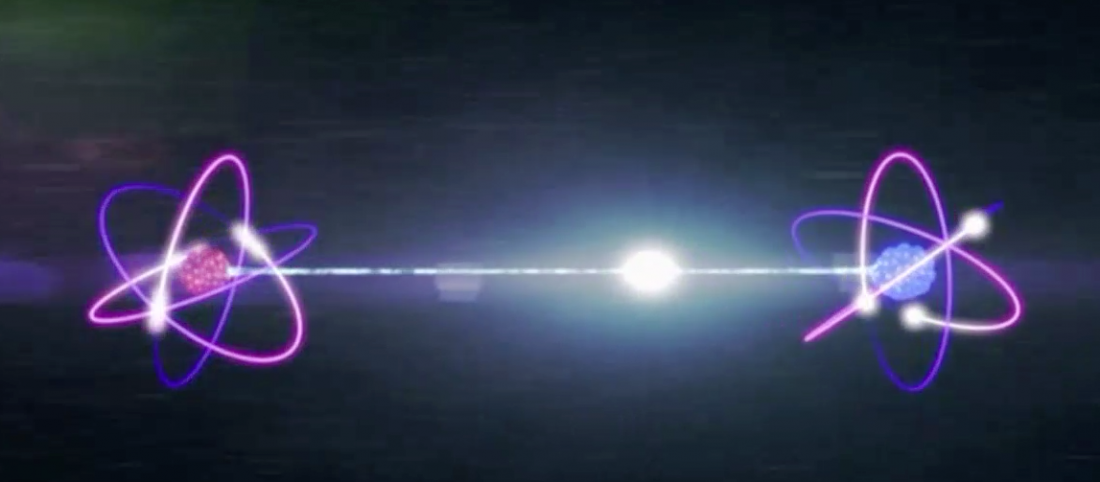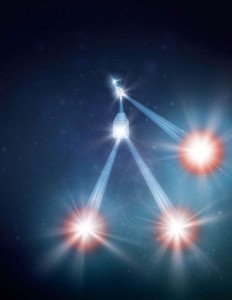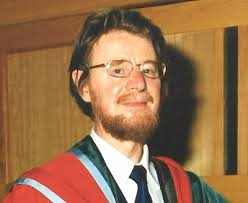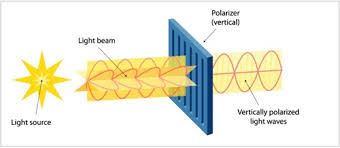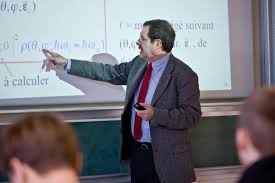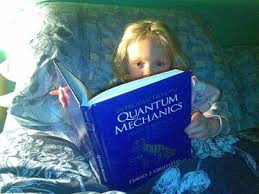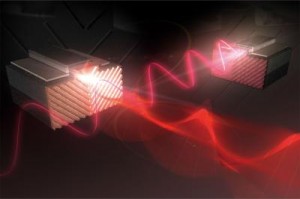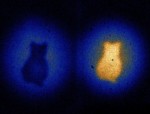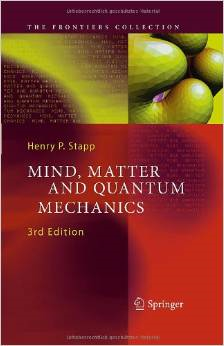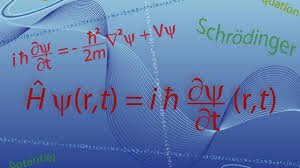I have hope that someday readers will visit Quora.com to look up me — Billy Lee — to read my answers to hundreds — perhaps one day thousands — of questions asked by every kind of curious person from every part of the world.
I love to read and think about questions from unmet others — to encounter oddities that have never occurred to me to ask or answer.
It’s humbling to be confronted by the knowledge that not only do I not know the answers to thousands of questions, but I lack the breadth of mind to even imagine such questions; I am convicted by my own lack of curiosity and inability to think deeply about an almost infinite number of mysteries that other people of all types and backgrounds wonder about and seek to understand.
Hundreds of years ago, polymaths — the smartest and most energetic of them, anyway — could know and understand all that humankind ever dreamed. Today, the world is too complex; the depth of knowledge required to understand a narrow subject — like juice-carton safety-caps (I hold a patent) — takes years, maybe decades, to acquire.
Is it any wonder that smart people give up and go stupid?
No matter how much a Doctor of Philosophy knows about the rules of logic, he’s a dummy to every certified automobile mechanic he will ever meet — and vice-versa, right?
A way out of the dilemma is to practice the art of pontification. I pontificate based on a lifetime of experience; and reading; and wandering the world; and poking around in my backyard — to ponder why things are the way they seem to be.
Je connais beaucoup de merde, and I know a lot of nothing. When I write it down, well, magic happens. Resonate rings of truth rise which when later read render me reeling.
I’m unsure where-from the magic comes. It seems to fall from heaven to light the world. I’m driven to share with souls known only to God, because I have no way to know who reads my blog. I know only that some folks make the time, because WordPress stats say it’s so.
One of the things on Quora.com that seems to confuse a lot of people is the difference between momentum — a measure of the mass of an object multiplied by its velocity in a particular direction — and kinetic energy, which is a measure of the energy of an object that has been accelerated for a period of time in a particular direction, which enables it to do work.
Momentum is an object’s mass times its velocity; it is a measure of its inertia along a defined direction. It is measured in newton-seconds.
Kinetic energy is released by an object in units of acceleration that were initially induced by newtons of force. It is equal to half the quantity that is calculated by multiplying an object’s mass by its velocity squared. It is measured in units called joules, which are newton-meters.
Of course, spinning objects that aren’t moving in any direction have momentum and kinetic energy, too. The two are wrapped together in a concept called, torque.
Dear God, help me.
Now, I’m confused. Somebody, please, explain to me. I thought I understood until I started writing. I did. Really.
Another source of confusion concerns the nature of photons, which are tiny packets of oscillating electric and magnetic energy — from which light is made, right?
Photons seem to have no mass in the vacuum of space. When they pass through a material like glass, they leave a wake of disrupted electrons in the glass which belch out polaritons. These particles add mass to the photons and slow them down by as much as forty percent.
Polaritons can be described as light-matter waves.
Does anyone believe it?
It’s God’s honest truth.
When photons exit the glass and enter the vacuum of space they leave the polaritons behind, lose their acquired mass, and jump to light speed, instantaneously.
Who knows for sure that it’s true?
Who understands why?
Here is an interesting thought: if humans — limited in understanding by language and mathematics — are unable to ever know why photons exist and behave as they appear to do, then who can? Who does understand?
Is all the complexity of the universe understood by no one? Is it possible that an unlikely universe can exist forever whose fundamentals cannot be articulated and which lies outside the experience and ability to comprehend of any sentient life-form whatever, whenever, wherever?
What kind of place do we live in, anyway?
Calm down. Take a breath.
Reality may not be as hopelessly inaccessible as it seems. Can it?
Here are some questions, which I’ve answered as truthfully as I know how. The answers are assertions of truth.
1 – How did a single cell organism eventually lead to complex life on earth, and does that mean that all life has a common ancestor (the single cell)?
This one is the 64-million-dollar question that no one has ever answered convincingly. Prokaryotic cells were established 3.5 billion years ago on the early Earth. They evolved to become the bacteria and archaea branches in the tree of life that exist to this day.
Here is the amazing part, at least for me: Eukaryotic cells, which are the much larger and more tightly organized cells of all animals and plants, did not emerge until two billion years after prokaryotes. It took a long time to evolve cells capable of conjugating into more complex life.
For the past 1.5 billion years eukaryotic cells have evolved into life forms capable of civilization and space exploration. The time frame is amazingly long.
The thought that a lunatic could in a moment of bad judgment start a cascade of events that extinguishes all life is troubling.
When astronomers look into space they see no signatures of life as advanced as ours. Again, this is troubling, because it might be an indicator that the knowledge possessed by advanced life-forms may approach some asymptotic limit where self-annihilation becomes inevitable.
2 -What evidence would falsify the theory of evolution?
No one knows all the myriad ways that life evolves, only that it does. That life evolved from cells that were fully functional 3.5 billion years ago is an established fact, because of evidence found in rocks.
Scientists know that it took two billion years for these ancient cells to evolve into the much larger and more tightly organized eukaryotic cells that today are the foundational structures of all animals and plants.
No one knows how life as complex as cells was established on a hostile planet like the early Earth, but everyone has an opinion; these opinions are called conjectures and theories.
One scientist might say that life started on Mars and was transferred to Earth on space debris uplifted by a cataclysm on Mars. Another says no; all the stuff necessary to make prokaryotic (primitive) cells existed in abundance on a young Earth — perhaps near hot vents in the ocean floor. Other geologists say the earth was bone dry at one billion years. Oceans came later, so just what the heck does anyone know for sure, anyway?
Many conjectures purport to explain how life changed from unicellular eukaryotic forms 1.5 billion years ago into the space-exploring civilizations of today. Every conjecture thus far has already been falsified either by evidence or by competing conjectures that make as much sense but are different.
For example: some say mutations in DNA drive evolution. The problem is that mutations are too rare. Some say an eco-sphere of processes driven by a halo of molecules that cling to DNA drives evolution. They call it epigenetics. Others say, no. RNA drives evolution like colonies of intelligent ants who build hives. There are other explanations.
None are verifiable or generally accepted due to an insufficient body of proof that is able to overcome alternative ideas that are equally compelling.
Another problem is that no one knows if DNA life is all there is. DNA is a molecule that cannot be seen or worked with until it is amplified into a viewable goo.
Are there other undiscovered molecules no one knows how to amplify?
Understanding of the parameters and limits of life is incomplete and may perhaps mislead researchers. Humans might not yet know enough to figure out the dynamics of genomes. More needs to be discovered and understood.
Is there a shadow biosphere that is in a symbiotic relationship with DNA? Where is the dark DNA that biologists can’t find that is necessary to code for many of the proteins they know exist?
How were cells themselves established so quickly on Earth? It’s a question whose answer is discussed by countless experts and non-experts; no answer fully satisfies.
Darwin’s ideas about natural selection and survival of the fittest have their place. But he was just getting started, and he died a long time ago. Scientists have a lot of work left to do.
3 – Which Bible story is most objectionable when looked at in the context of modern morality?
All Scripture is God-breathed. To love and be loved by both God and people is why we were born; it’s what makes life precious and worth living. No one wants to die; no one wants to be hated.
The sad part is that everyone suffers; everyone is hated by someone; everyone hates someone; everyone dies after a life of blunders and sin. Christ Jesus came to save the lost, which by the looks of this thread is pretty much everyone.
We have hope. It’s something to hold onto as we grow weak and find ourselves ruined at the end of our minutes in the sun on our beloved Earth.
Jesus made a path for us. It cost him everything a human can pay. He somehow survived the Roman crucifixion that killed him to show the poor and overly burdened that in his power is the way, the truth, and the life.
There is a path to paradise; we — everyone of us — can find it by surrendering to the God who loved us, gave us life, and suffered to set right what we put wrong.
4 – People say Newton’s third law, “For every action, there is an equal and opposite reaction,” is not accurate. Is it true?
Einstein said that only mass and energy exist; they are in fact equivalent; they are the same thing; two sides of the same coin. Energy gives rise to all other phenomenon and forces that scientists observe.
Stephen Hawking said that when mass (or energy) comes into existence a negative energy must emerge to balance it so that when added up everything in the universe sums to zero. It appears that Newton’s third law, equal and opposite, is not only accurate — it is a fundamental balancing principle that undergirds existence.
Mass is matter, which can be positive or negative and is referred to as matter or anti-matter.
The Billy Lee Conjecture claims that mass is pixelated (quantized) such that in the contest of emergence within the smallest spherical volume, matter or anti-matter (one or the other) will prevail due to a natural truncation of π in the putative spherical volume of the creation space.
An evenly divided ratio of matter and anti-matter within a spherical creation-space is physically impossible if π is truncated by pixelization. Matter and anti-matter will annihilate until a single piece of either matter or anti-matter remains after the creation event.
To maintain a zero-sum, balancing counter-energy will emerge according to speculation by the late Stephen Hawking.
Over long periods it seems that an extraordinary amount of matter has accumulated inside our own universe by surviving the natural annihilation of matter by anti-matter. This matter seems to have generated an enormous amount of counter-balancing energy — some of which Newton called gravity. Most of the energy remains undiscovered and is referred to as “dark.”
In our own universe, π seems to “round-off” near the precision of the Planck constant.
In universes outside our own — some of which seem to be pulling our universe apart in an accelerating expansion caused, perhaps, by their own gravitational forces — π may truncate to different values to generate in some cases a prevailing anti-matter and opposing energies that manifest qualities different from the energies found in our own universe.
If parallel universes disrupt the zero-sum strategy of our own, it may still be true that the principle of zero-sum or equal but opposite is operational, but humans are too small and the distances are too far for anyone to ever know for sure that it is true.
5 – What are the major foreign policy issues that the United States of America is working on in 2018?
I’m writing this answer just after the meeting in Singapore between North Korea and the United States involving the Korean nuclear arsenal.
The Secretary of State, Pompeo, said yesterday that NK has two years to de-nuke. This delay might tempt the Japanese to convert their stockpile of 47 tons of plutonium into bombs. Japan and North Korea have issues related to the Japanese occupation of Korea from 1910 to 1945.
It takes ten pounds to make one bomb. The Japanese can make as many bombs as they want in as little as 24 hours.
A Japan armed with 10,000 nuclear bombs (they already have the missiles to launch them) is a clear and present danger to China, Russia, and Korea — not to mention the United States with whom Japan has a beef that goes all the way back to World War Two when the USA destroyed 67 of their cities with napalm; two cities by atomic bombs.
The USA has occupied Japan ever since. Some of the Japanese probably hate us — who knows for sure?
6 – Can a photon’s speed be slowed down? I have heard that it can be slowed by a medium, but I have also heard that it is just the velocity being slowed as it “bounces” from particle to particle? I am not talking about Bose-Einstein condensation.
The current thinking is this: when a photon leaves the vacuum to enter a material object, it leaves a wake in its path that vibrates electrons in the medium. These oscillating (or disturbed) electrons generate polaritons, which are photon-like objects that can catch and add mass to the photon. With mass added, the photon slows down — as much as 40% in glass, for example, which enables more polaritons to pile on.
When the photon exits into the vacuum of space, it disentangles from the polaritons, and instantly resumes light speed.
I didn’t make this up.
It’s what some physicists are saying, and it explains a lot and leaves a lot unexplained — like all things physics when folks go just a little deeper into the abyss of understanding.
7 – What is the relation between light and darkness? Can one exist without the other?
Light is the action of certain wavelengths of electromagnetic radiation on structures in the eye, which trigger hallucinations in the brain that humans report as “light.”
An infinite range of frequencies are “out there.” Humans are blind to almost all of them. People who are unable to trigger hallucinations induced by electromagnetic radiation say that they are experiencing “darkness.”
Some frequencies of light are experienced as “heat.” Because the sensation is not accompanied by visual cues, people in hot rooms with no windows believe they are experiencing “darkness.”
The experience of heat is caused by the same electromagnetic waves that induce visual experience, but they are a tiny bit longer in length than those which induce the experience of the color “red” in humans.
The longer waves carry less energy and are invisible to people unless they view the ”infra-red” light through high-tech sensors. Local fire-departments use these sensors to identify ”hotspots” where fires might reignite.
8 – Given an opportunity to pass through one or two slits with no detection, will a quantum object always pass through both?
If the slits are in the right position and are cut to the right size and are at the right distance from the source, a pattern on a detector screen will evolve over time to look as if waves are passing through the slits and interfering in a predictable way with each other.
Of course, it’s not true, because the particles are shot one at a time and the duration of the experiment can be hours to weeks long. The shots land one dot at a time. After thousands of shots, a pattern that resembles what one would expect of waves interfering is formed by the particles as they accumulate on the detector backstop.
No one knows why. The phenomenon is inexplicable.
9 – Is Jesus a hoax? Jesus has not walked on Earth in 2,000 years. How can a man 2,000 years ago save anyone?
I was hungry and you gave me something to eat, I was thirsty and you gave me something to drink, I was a stranger and you invited me in,
I needed clothes and you clothed me, I was sick and you looked after me, I was in prison and you came to visit me.
The righteous will say, ‘Lord when did we do these things?’
My answer will be, ‘Everything you did to help suffering people, you did for me.’
The preceding is a paraphrase of part of Matthew 25, a book in the Bible.
Read it. Why not?
The answer is in the sense that it is not a hoax that the “least of these” walk the earth when we do. How we treat unfortunates is, in the view of Jesus, the way we treat him. He will return to us the same courtesies when finally we give GOD an account of our lives.
10 – Can RNA or DNA think?
RNA, in its many forms, behaves like ant colonies which swarm over the DNA pile to do a number of tasks that seem to involve a lot of decision making.
RNA selects out of billions of bases a few thousand which it strings together to make “genes” that it transfers to ribosomes — which are made almost entirely of RNA and are among the oldest structures in cells.
At a ribosome, the genes are coupled to RNA that carries amino acids; the amino acids are then ejected from the ribosome to be strung together like necklace beads; they are transported to Golgi structures where they are folded into proteins.
A process this complex — and it’s actually far more complex than this summary implies — can be orchestrated without intelligence; it’s possible, but without intelligence of some form, the process seems, at least to me, to border on the miraculous.
After all, what is the result?
It is a conscious thinking life-form who can, in cooperation with others, figure out its own origins.
It’s amazing, right?
11 – How do Quantum spins get affected by Quantum entanglement?
All atoms with electron shells that are home to more than one electron have entangled electrons. The spins tend to oppose each other. With bosonic particles, down conversion techniques produce photons that have opposite polarization.
Most physicists think that spin is induced during measurement; the spin is transmitted oppositely to the entangled partner instantly — no matter how far separated.
For this reason, a pair of entangled particles can be envisioned as a single particle that behaves as if one of its dimensions (the distance between its endpoints) is missing.
The distance between the entangled pair behaves as if it is zero — when it is known to be non-zero.
12 – What is the viability of colonies on other planets?
The two planets closest to Earth are the most viable places for colonies simply because they are the easiest to resupply. They are Mars and Venus.
Neither can sustain colonies, because they lack magnetospheres, which are essential for deflecting high energy particles emitted by the Sun (called the solar wind). These particles are deadly to life. The molten iron-nickel cores of Mars and Venus froze millions of years ago on both planets, which collapsed their magnetospheres.
Venus has a highly toxic atmosphere, which is another reason to rule out colonization there.
Beyond Mars are gas giants. Only their rocky moons are candidates for human colonies. All the moons appear to be too cold to operate the machinery necessary to sustain human life. Most lack protection from the solar wind.
Bonus Assertion – Does a photon consist of (f) quantized energy packets each of (h) joules?
A photon seems to be a packet of vibrating electric and magnetic energy, each part of which exerts its energy at a right angle to the other. The energy in the packet is proportional to vibrational frequency alone. A photon has no mass or acceleration. It travels along at a constant speed in space-time. The electric portion of the energy is about seven times the energy of the magnetic portion.
Photons can become more intense (that is, brighter) when they pile up. Pile ups don’t happen to electrons, protons, and neutrons because they obey an exclusion principle that forbids them from occupying the same space at the same time.
Photons can pile up, but their intensity (or energy) can only be transferred into electrons that are in an energy state that resonates with the frequency of the incoming photons. Non-resonate electrons ignore un-matched photons, so photons pass through non-resonate electrons unimpeded.
The energy of an individual photon can be expressed as its kinetic energy and shown to equal Planck’s constant times the photon’s frequency, which always results in a very small number.
When expressed in terms of its wavelength (λ), photon energy equals the Planck constant (h) times the speed of light (c) divided by the wavelength (λ) of the photon. Notice that the mass term is missing due to a simple manipulation of the relevant equations — which anyone who is interested can find in the following link.
Momentum might not be an appropriate metric for a force carrying boson like a photon, because momentum is based on mass, which many physicists say photons in a vacuum don’t possess.
Another reason momentum could be an inappropriate metric is that the velocity of photons in a vacuum is independent of any reference frame, right? Momentum is a vector quantity that is always measured in relationship to a particular reference frame or the momentum of another particle.
There is a theory that claims that photons pick up mass when they pass through materials like glass. They seem to leave a wake that shakes up electrons in the material. The vibrating electrons release polaritons, which by a mechanism analogous to superposition add mass to the photon and slow it down. When the photon exits and returns to vacuum, it sheds the polaritons, becomes massless, and returns to light speed instantly.
Perhaps photons in the vacuum of space acquire mass by interacting with virtual particles that emit virtual polaritons. Notions about the nature of the universe would be changed radically if such a notion were confirmed by evidence.
Because h and c are constants, they can be multiplied together to give a constant that is very close to 2E-25. Dividing 2E-25 by the wavelength of a photon will give its energy in joules. Of course, all units are SI, which stands for standard international units, correct?
Since E = hf or (hc / λ) , the energy is always a multiple of h, which is the Planck constant. The word “multiple” is a simple way to say “quantized”.
So, the energy of a photon bunch or pile can be expressed as a multiple of the number of photons of a certain wavelength in that bunch. The energy in each individual photon is its wavelength (or frequency, if you like) multiplied by the Planck number — a constant equal to 6.626E-34.
It takes a pile-up — or bunch — of about 7 photons with wavelengths close to 2.5 one-hundred-thousandths of an inch long (635 nanometers) to carry enough energy to light up the sensors in a human eye.
How much energy is in those seven photons? It is seven times 2E-25 / 635E-9 — in joules, right?
It’s 2.2E-18 joules. Converted to an easier metric befitting its scale, the energy is nearly 14 electron volts, which is equivalent to the energy held in 14 electrons.
People say that photons with wavelengths that measure 635 nanometers create the color yellow-orange in their minds.
Billy Lee


